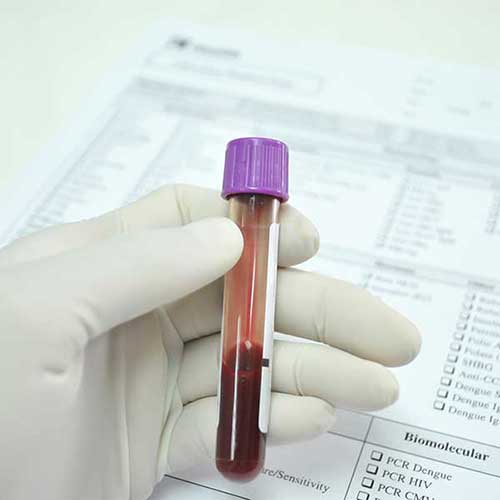Did the U.S. Preventive Services Task Force admit it made a mistake when it reversed a 2012 recommendation Tuesday with a qualified endorsement of the controversial PSA blood test as an indicator of prostate cancer in men ages 55 to 69?
The task force, which previously said the PSA’s risks outweighed its benefits, now says adult men should consult with their doctor and decide for themselves whether to have the test that checks for elevated levels of prostate-specific antigens, or PSA.
“I was very much against the 2012 guidelines,” said Dr. Joseph Wagner, a urologic oncologist with the Hartford HealthCare Medical Group and director of robotic surgery at Hartford Hospital. “The death rates of prostate cancer decreased in the 1990s with prostate cancer screening and the rates of patients presenting with metastatic prostate cancer have increased since the [task force’s] 2012 recommendations. While the benefits may be ‘small,’ prostate cancer screening practices are the most reasonable explanation for these documented observations.”
The task force says it reversed its position not because of objections by urologists but because of updated data that shows screening in a younger age group prevents one to two prostate cancer deaths within 13 years for every 1,000 men screened. It based its 2012 recommendations on the PSA test’s common false alarms — elevated levels can also indicate an enlarged prostate, a benign condition — that can lead to unnecessary biopsies that can be painful and sometimes dangerous.
“The decision about whether to be screened for prostate cancer should be an individual one,” said Dr. Kirsten Bibbins-Domingo, a San Francisco internist and the task force chairwoman in a draft recommendation statement published on the American Medical Association’s website.
The task force still does not recommend PSA testing for men age 70 and older because of a higher rate of over-diagnosis that would raise concern, said Bibbins-Domingo, that “screening may result in more harm than benefit.”
Dr. Wagner is among the many urologists who continue to challenge such guidance.
“I, and the American Urological Association, feel men up to age 75 should be considered,” said Dr. Wagner. “In fact, I do not believe in age cutoffs. Any man with a life expectancy greater than 10 years should consider prostate cancer screening.”
The American Cancer Society estimates 161,360 new cases of prostate cancer this year, with 26,730 deaths expected from prostate cancer. It’s the third-leading cause of cancer death in American men, with about six in 10 cases diagnosed in men 65 and older.
An estimated 3 million men in the United States have prostate cancer. But with no sure method to distinguish dangerous prostate cancers from harmless prostate cancers, treatment typically combines surgery and radiation that can leave patients impotent or incontinent. The survival rate for early-stage prostate cancer is 99 percent after 10 years regardless of treatment, according to two studies published last year in the New England Journal of Medicine.
The Grade D rating the task force assigned universal prostate cancer screening in 2012 means the potential benefits do not outweigh the risks. The new guidance, Grade C, makes the decision personal with a doctor’s input. The recommended age group for screenings (ages 55 to 69) remains unchanged. The task force did not make a specific recommendation for African American men, who have a higher risk of prostate cancer. (It’s the most commonly diagnosed cancer among black men, an estimated 31 percent of all cancers.)
What about men ages 40 to 55?
“An individualized approach of the appropriateness of PSA-based screening is necessary,” says Dr. Wagner. “This approach should consider individual factors, particularly family history and ethnicity.”
For more information, visit the Tallwood Urology & Kidney Institute.

